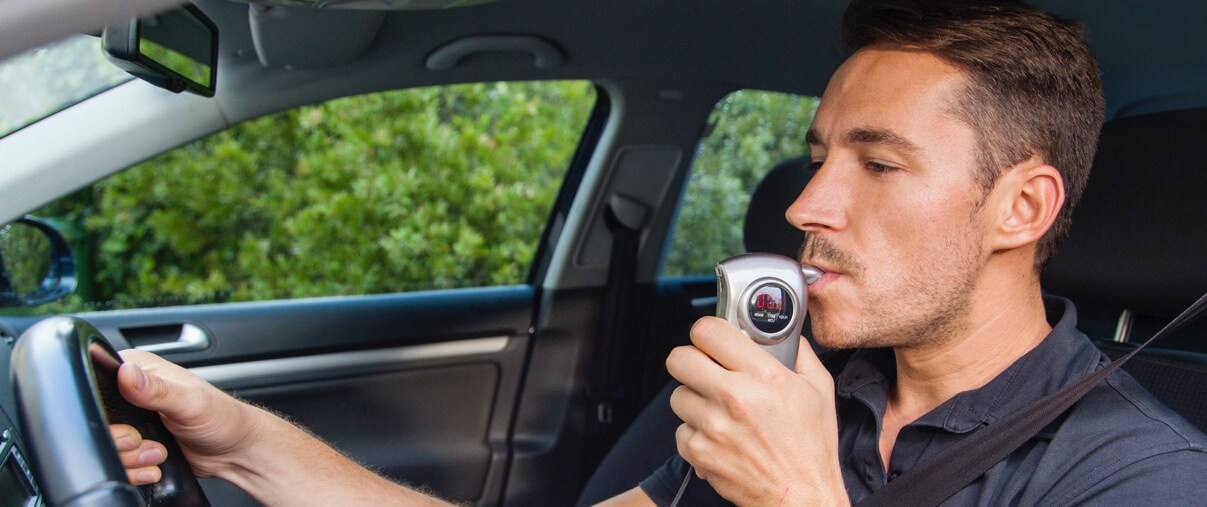
State laws requiring all DUI offenders to breathe into ignition interlock devices before operating a motorized vehicle are more effective than partial interlock laws at reducing alcohol-related fatal crashes, a Johns Hopkins University study found.
The study, published in the American Journal of Preventive Medicine, examined the effects of state interlock laws on alcohol-related fatal crashes in the United States from 1982 to 2013. Researchers drew data from the National Highway Traffic Safety Administration Fatality Analysis Reporting System.
States that mandate interlock devices for DUI offenders experienced a 7 percent decrease in the rate of fatal crashes involving a blood-alcohol content above 0.08, the study found. These states saw an 8 percent reduction in the rate of fatal crashes involving a BAC of 0.15 or higher.
“Interlock laws which are mandatory for all DUI offenders save lives,” study leader Emma McGinty said in a press release.
Researchers estimated 1,250 crashes involving a BAC higher than 0.08 were prevented in states where mandatory ignition interlock laws exist.
States with Interlock Laws
Twenty-eight states have mandatory laws requiring DUI offenders to use an interlock device before driving. Every state has some sort of ignition interlock law, though many states reserve these devices for repeat DUI offenders or those convicted of drinking and driving with a very high BAC.
Thirty-six states implemented partial interlock laws from 1982 to 2013, according to the study. During this time, 21 states enacted mandatory interlock laws. Sixteen states enacted full interlock laws from 2005 to 2013, including Colorado, New York and West Virginia.
Most recently, Maryland passed the Drunk Driving Reduction Act of 2016, also called Noah’s Law. The legislation requires all people in Maryland convicted of drinking and driving to install an interlock device in their vehicle.
The law was named after Noah A. Leotta, a Montgomery County, Maryland, police officer who was struck by a drunk driver in December 2015. He died of his injuries three days later. He was 24.
Chuck Brown, a spokesman for the Maryland Motor Vehicle Administration, told The Baltimore Sun that the state’s more limited interlock law prevented 4,000 trips by drivers with a BAC greater than the legal limit in 2015.
Drinking and Driving Statistics
Drinking and driving continues to be a problem in the United States.
According to the National Highway Traffic Safety Administration, 9,306 fatal crashes in 2015 involved alcohol. That year, 27 percent of drivers with a BAC of 0.08 or higher involved in fatal crashes were operating a motorcycle.
Fifty-five percent of drivers with a BAC of 0.08 or higher involved in fatal crashes in 2015 were aged 21 to 34, according to the NHTSA.
| Age | Percent |
| 16 to 20 | 16 |
| 21 o 24 | 28 |
| 25 to 34 | 27 |
| 35 to 44 | 23 |
| 45 to 54 | 19 |
| 55 to 64 | 9 |
| 75 or older | 6 |
| Total | 20 |
Source: National Highway Traffic Safety Administration
The Johns Hopkins study shows that interlock devices can reduce alcohol-involved fatal crashes. The study’s researchers suggest that mandatory interlock laws should be implemented in states with partial interlock laws.
“Our study suggests that [interlock laws] are effective, and it’s encouraging to see more and more states moving towards this evidence-based policy change,” said McGinty.
Medical Disclaimer: DrugRehab.com aims to improve the quality of life for people struggling with a substance use or mental health disorder with fact-based content about the nature of behavioral health conditions, treatment options and their related outcomes. We publish material that is researched, cited, edited and reviewed by licensed medical professionals. The information we provide is not intended to be a substitute for professional medical advice, diagnosis or treatment. It should not be used in place of the advice of your physician or other qualified healthcare provider.